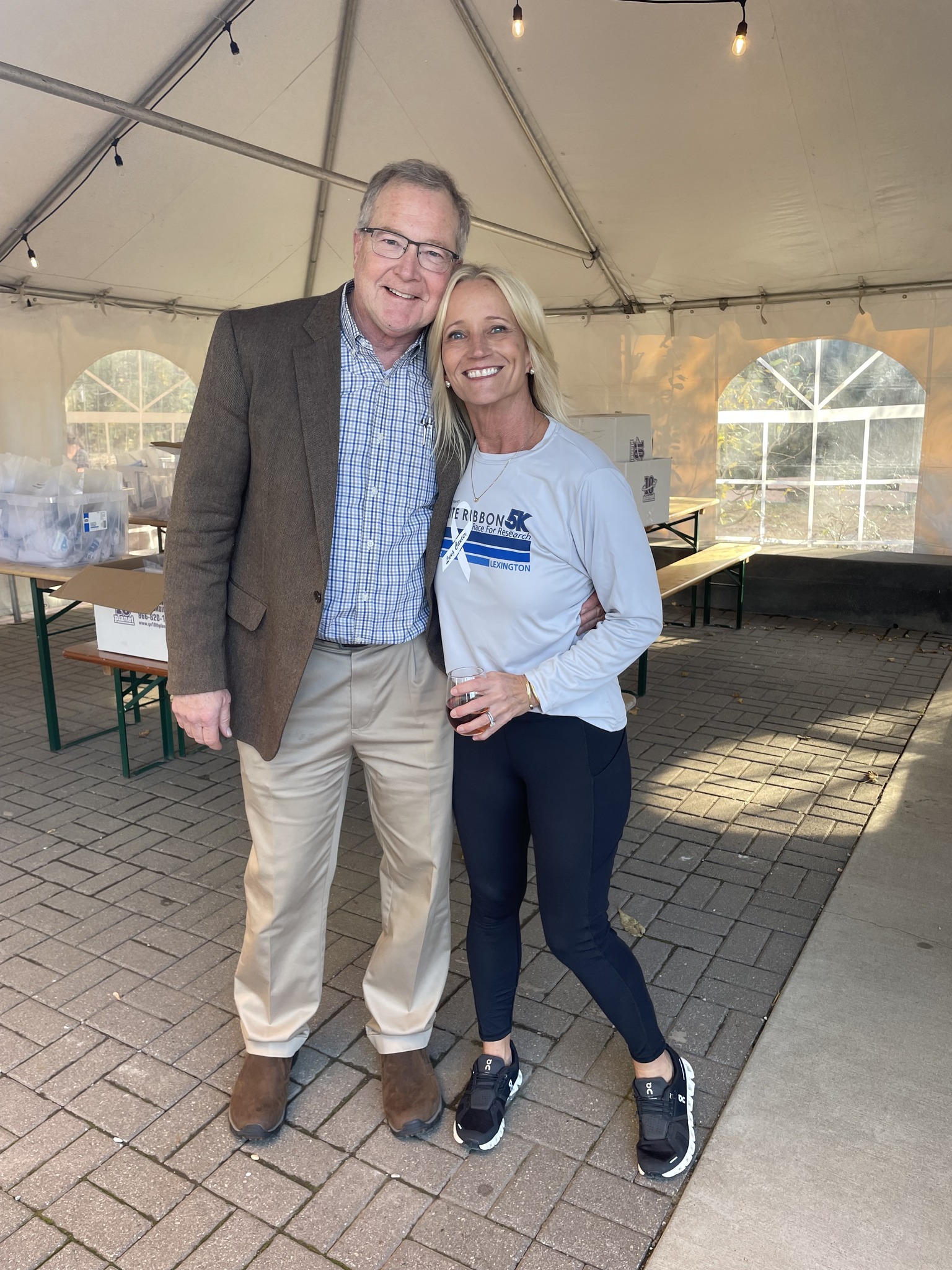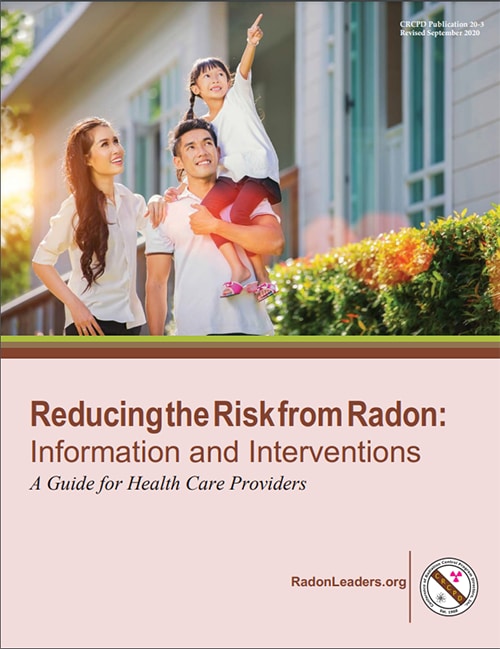Radon Information for Healthcare Providers
Healthcare providers can have a significant impact on reducing radon-associated lung cancer.

Dr. Timothy Mullett pioneers a multidisciplinary approach to lung cancer prevention, screening, and treatment saving lives of people like Lindi Campbell. Lindi is a lung cancer survivor who never smoked and grew up in a home with high radon levels.
An estimated 21,000 people die from lung cancer caused by radon exposure each year making it the second leading cause of lung cancer after smoking, according to the Environmental Protection Agency (EPA). People who smoke or have a history of smoking and are exposed to radon are at a greater risk of developing lung cancer, but people who never smoke can also get cancer from prolonged exposure to high radon levels.
The risk of lung cancer from radon is preventable but patients need to have the right information.
Reducing the Risk from Radon: Information and Interventions
Reducing the Risk from Radon: Information and Interventions [PDF – 1,569 KB] is a guide for healthcare providers developed by The Conference of Radiation Control Program Directors (CRCPD).
In this guide you will find
- Information on radon and how it gets into homes.
- Data on the public health impact of radon and risk estimates for people who currently smoke or did in the past and for people who have never smoked.
- Guidance and resources on radon testing and radon reduction.
- An adaptable discussion guide to use when talking to patients about radon.
People have health at the top of their minds when they are at doctor’s office. Many patients trust their doctors for advice and decisions about their health and wellness. Consider incorporating simple steps into your practice, such as asking patients about whether their home or residence has been tested for radon and providing information on radon testing and reduction. Hanging or distributing the information sheets found below is a simple way to raise awareness and start the conversation. If your patient also smokes, quitting smoking is still necessary to reduce the risk of lung cancer. Patients can call 1-800-QUIT-NOW or visit CDC.gov/quit for free support and resources to help quit smoking.
Informational Resources for Healthcare Providers
EH Nexus Webinar for Radon Awareness Week 2022– This webinar kicked off CDC’s 2022 Radon Awareness Week, observed on January 24-28. Subject matter experts highlighted the following topics:
- Basic information on radon and how to test for and reduce radon in your home.
- The combined risk of radon and cigarette smoking, including second-hand smoke.
- A deep dive into data and guidance for healthcare providers.
ATSDR Clinician Brief: Radon– an educational activity designed to increase knowledge about radon and its health effects among healthcare professionals.
EPA’s Health Risk of Radon– information and resources on the health risks of radon and links to a video series for healthcare providers.
Having an Impact
Dr. Maley, thoracic surgeon who treated Jackie Nixon. Jackie is a lung cancer survivor who never smoked. Watch Dr. Maley and Jackie talk about their experience and read about her story.
Doctor’s offices and clinics can display these radon communication materials to help inform patients.
An estimated 21,000 people die from lung cancer caused by radon exposure each year making it the second leading cause of lung cancer after smoking, according to the Environmental Protection Agency (EPA). People who smoke or have a history of smoking and are exposed to radon are at a greater risk of developing lung cancer, but people who never smoke can also get cancer from prolonged exposure to high radon levels.
The risk of lung cancer from radon is preventable but patients need to have the right information.
Had she been diagnosed in 2000, we would have never even thought of her case as radon-related.
Reducing the Risk from Radon: Information and Interventions
Reducing the Risk from Radon: Information and Interventions [PDF – 1,569 KB] is a guide for healthcare providers developed by The Conference of Radiation Control Program Directors (CRCPD).
In this guide you will find
- Information on radon and how it gets into homes.
- Data on the public health impact of radon and risk estimates for people who currently smoke or did in the past and for people who have never smoked.
- Guidance and resources on radon testing and radon reduction.
- An adaptable discussion guide to use when talking to patients about radon.
People have health at the top of their minds when they are at doctor’s office. Many patients trust their doctors for advice and decisions about their health and wellness. Consider incorporating simple steps into your practice, such as asking patients about whether their home or residence has been tested for radon and providing information on radon testing and reduction. Hanging or distributing the information sheets found below is a simple way to raise awareness and start the conversation. If your patient also smokes, quitting smoking is still necessary to reduce the risk of lung cancer. Patients can call 1-800-QUIT-NOW or visit CDC.gov/quit for free support and resources to help quit smoking.
Additional Resources for Healthcare Providers
EH Nexus Webinar for Radon Awareness Week 2022– This webinar kicked off CDC’s 2022 Radon Awareness Week, observed on January 24-28. Subject matter experts highlighted the following topics:
- Basic information on radon and how to test for and reduce radon in your home.
- The combined risk of radon and cigarette smoking, including second-hand smoke.
- A deep dive into data and guidance for healthcare providers.
ATSDR Clinician Brief: Radon– an educational activity designed to increase knowledge about radon and its health effects among healthcare professionals.
EPA’s Health Risk of Radon– information and resources on the health risks of radon and links to a video series for healthcare providers.

